Last Updated: [Current Date]
Is the Squier Classic Vibe ’60s Jazzmaster the budget-friendly Jazz Master Guitar you’ve been searching for? In this in-depth review, we dive into every aspect of this popular instrument. Unlike many reviews online, this is a completely independent assessment. I purchased this guitar myself to give you an unbiased perspective on whether this Classic Vibe Jazzmaster lives up to the hype and if it deserves a place in your guitar collection.
To give you the full picture, I’ve spent over 40 hours playing and analyzing this Sonic Blue beauty, rigorously testing it to determine if it stands shoulder-to-shoulder with more expensive Fender Jazzmasters, or if it falls short. Let’s explore if this Squier truly captures the essence of a jazz master guitar.
About the Reviewer
Hi, I’m Karol. Guitar has been a passion for over 20 years. While I’m a dedicated player, I still consider myself a student of the instrument. My musical journey includes past band experiences, but now guitar is purely for the love of playing.
Why trust this review? My priority is to provide you with honest and helpful information. Tired of biased online reviews, I created Art Of Shred to offer transparent opinions on guitars and musical equipment. My potential earnings are only through affiliate links if you choose to purchase through this page, ensuring my reviews remain independent. These are my personal opinions based on extensive playing time. Your experience may vary, and I encourage you to consider this review as one perspective among many in your research for the perfect jazz master guitar.
Squier Classic Vibe ’60s Jazzmaster: Detailed Overview
Rating: 7.6 out of 10
Price: $429.99 (USD)
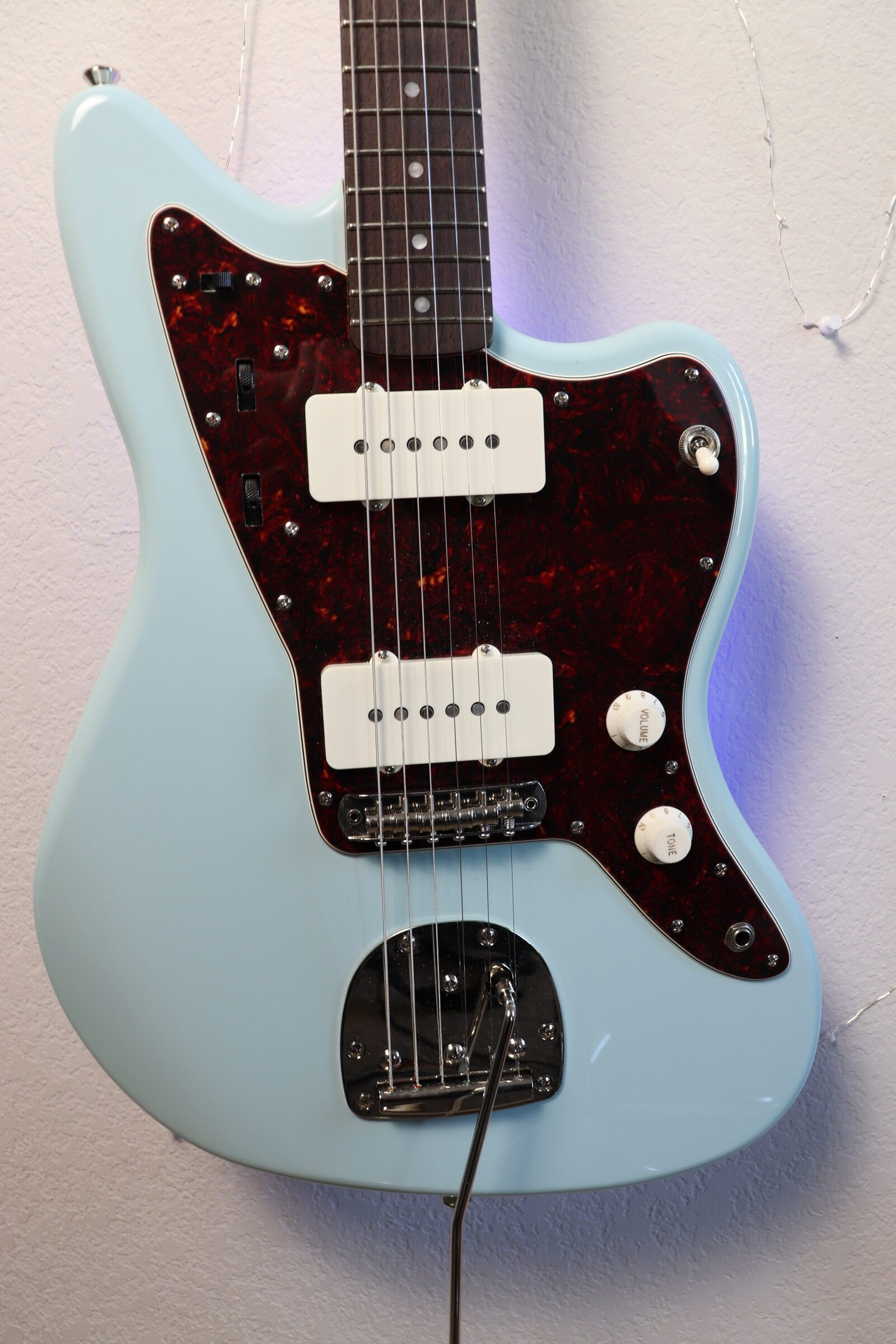 Squier Classic Vibe '60s Jazzmaster in Sonic Blue
Squier Classic Vibe '60s Jazzmaster in Sonic Blue
Sonic Blue Squier Classic Vibe ’60s Jazzmaster
Key Specs:
- Made in: Indonesia
Scores Breakdown:
- Looks: 9/10
- Setup (Out of Box): 3/10
- Feel: 8/10
- Sound: 9/10
- Value: 9/10
Pros:
- Engaging and enjoyable to play, capturing the essence of a jazz master guitar.
- Distinctive and versatile sound profile.
- Visually appealing vintage aesthetics.
Cons:
- Initial setup required significant attention upon arrival.
- Susceptible to noise, inherent to single-coil pickups.
- Potential need for upgrades to meet individual playability preferences for a top-tier jazz master guitar experience.
Explore the Squier Classic Vibe ’60s Jazzmaster:
Video Review: Squier Classic Vibe ’60s Jazzmaster in Action
For a more dynamic perspective, I’ve created a series of video reviews showcasing the Squier CV ’60s Jazzmaster, including detailed sound demonstrations in Part 1.
For a quick overview, Part 1 is essential viewing. Part 2 offers deeper insights and additional perspectives on this jazz master guitar.
Short on time? Watch this concise 45-second review for the absolute basics.
Delving into the Squier Classic Vibe ’60s Jazzmaster
The name says it all: the Classic Vibe ’60s Jazzmaster is inspired by the iconic 1960s Fender Jazzmaster. This model features 21 frets, a bone nut, vintage-style tuners, and Fender-designed single-coil pickups – crucial to the authentic jazz master guitar tone (it’s important to note these are not P90s). It also includes the signature Jazzmaster tremolo system and, of course, the unique Rhythm and Lead circuits that define this style of guitar. For a comprehensive explanation of the Rhythm and Lead circuits, I recommend watching video #1, where the nuances are more easily demonstrated than described in text.
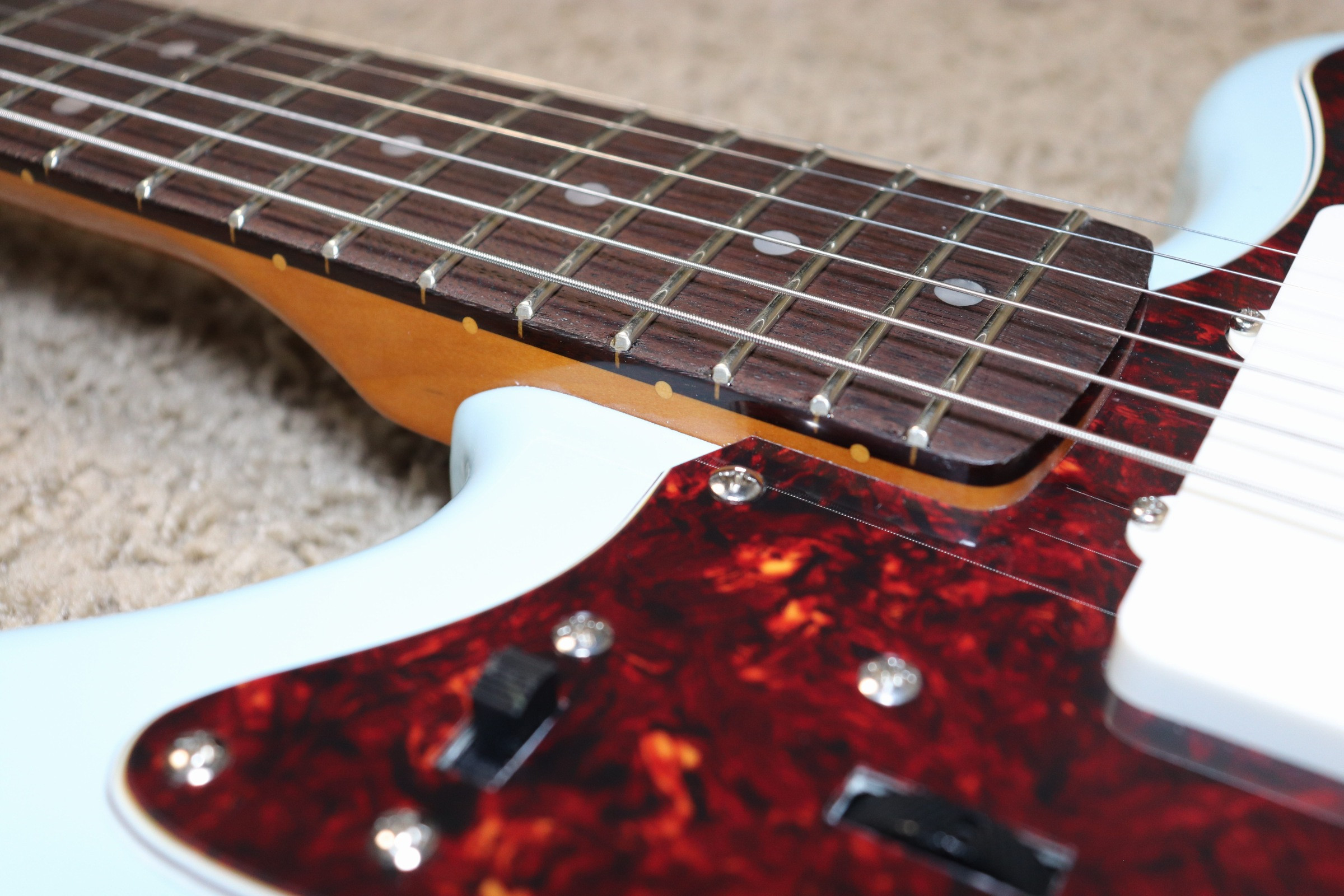 Jazzmaster Rhythm & Lead Circuit Switch
Jazzmaster Rhythm & Lead Circuit Switch
Understanding the Rhythm and Lead Circuits on a Jazz Master Guitar
The Rhythm and Lead circuits are fundamental to the Jazzmaster’s versatility. When you engage the Rhythm circuit (upper switch position), the traditional pickup selector and lower volume/tone knobs are bypassed. Control shifts to the upper roller volume and tone controls, typically offering a darker, mellower tone. Switching to the Lead circuit (lower position) activates the standard 3-way pickup switch, allowing you to select the neck pickup, both pickups, or the bridge pickup using the lower controls for volume and tone. For a visual and auditory demonstration, be sure to check out video part 1. Understanding these circuits is key to unlocking the full tonal palette of any jazz master guitar.
Initial Thoughts: Unboxing the Classic Vibe Jazzmaster
My anticipation was high upon receiving this guitar. However, the unboxing experience was, frankly, underwhelming.
 Classic Vibe Jazzmaster pickups & body photo
Classic Vibe Jazzmaster pickups & body photo
The fretboard showed noticeable glue residue and grime. Several minor chips were present on the fretboard edges (cosmetic issues, not affecting playability, but still unexpected on a new instrument). Additionally, a small blemish was found in the finish. These imperfections were disappointing, especially considering this model isn’t in the ultra-budget category anymore.
Despite these initial setbacks, the guitar’s overall feel was positive, and its aesthetic appeal was undeniable. It was clear that some cleanup and setup work would be necessary to bring it up to par – an investment of an hour or two to make it worthy of any guitar collection seeking a solid jazz master guitar.
I contacted Musician’s Friend regarding these issues, and their customer service was commendable. They promptly offered either an exchange or a partial refund to compensate for the required setup work. I opted for the refund and decided to proceed with the necessary adjustments myself. In retrospect, perhaps I could have negotiated for a larger refund, but I was satisfied with the resolution and eager to get the guitar in playing condition.
Drawbacks of the Squier Classic Vibe ’60s Jazzmaster
Beyond the initial out-of-box issues, there are a couple of inherent characteristics to consider.
- Noise: Jazzmasters, like most single-coil guitars, are prone to noise.
- Potential Upgrades: Some players consider certain upgrades essential for optimizing a Jazzmaster.
Addressing the first point, single-coil pickups are known for their characteristic hum, and Jazzmasters are no exception. While there are theories about why Jazzmasters might be marginally noisier than other single-coil designs (discussed in video #1), this noise is, for many, part of the guitar’s vintage charm. It’s generally manageable unless you’re playing high-gain genres like metal (in which case a noise gate can be beneficial). This noise characteristic is common to many guitars in the jazz master guitar family.
Regarding upgrades, opinions vary widely. Some Jazzmaster enthusiasts advocate for extensive modifications, sometimes costing as much as the guitar itself. Personally, I believe many of these are unnecessary for the Classic Vibe. However, I did make one minor, inexpensive upgrade: a $21.64 neck shim. More details on this in the Setup section below.
Advantages of Choosing a Classic Vibe Jazzmaster
If you’re drawn to Jazzmasters, you likely already appreciate their inherent strengths. But let’s reiterate the key pros of this model:
- Stunning Aesthetics: Captures the iconic Jazzmaster look beautifully.
- Excellent Sound Quality: Delivers the sought-after Jazzmaster tone.
- Fun and Inspiring to Play: Encourages creativity and exploration, quintessential for a jazz master guitar.
These core attributes are what make a Jazzmaster appealing. While it has its quirks, the Classic Vibe delivers on looks, sound, and playability – the essentials for a compelling instrument. Whether it’s the right guitar for you depends on personal preferences, but it undeniably excels in these key areas for a jazz master guitar experience at this price point.
My Setup Process for the Classic Vibe Jazzmaster
As mentioned earlier, the initial setup required significant cleaning, particularly of the fretboard. Video #1 details this process visually, but here’s a summary:
 Classic Vibe Jazzmaster lower bout photo
Classic Vibe Jazzmaster lower bout photo
Step-by-step setup:
- Fret Cleaning: Using a razor blade, I carefully removed glue residue from the frets (approximately 30 minutes).
- Fret Polishing: I masked the fretboard with painter’s tape and polished the frets using 9 grades of micromesh (about 45 minutes).
- Fretboard Conditioning: After removing the tape, I cleaned and conditioned the fretboard with lemon oil (D’Addario lemon oil, but any brand will suffice).
- Neck Shim Installation: This was my only upgrade – a 0.5-degree neck shim from Stewmac ($21.64 including shipping). This involved removing the neck, placing the shim, and re-attaching the neck. This adjustment is often discussed in forums related to optimizing the playability of a jazz master guitar.
- Bridge Height Adjustment: The neck shim altered the string break angle, necessitating raising the bridge to achieve the correct string height. Video #2 provides a detailed explanation of this step.
- Intonation: Finally, I set the guitar’s intonation. For those unfamiliar, I have a video guide on how to set guitar intonation. Proper intonation is crucial for any guitar, including a jazz master guitar, to play in tune across the fretboard.
The Sonic Character of a Jazzmaster Guitar
In my opinion, Jazzmasters sound fantastic. The video reviews include extensive sound demonstrations, and here’s a brief audio example:
[Insert Sound Demo Here – Ideally embed the same sound demo as in the original article if possible, or describe it]
I appreciate the tonal versatility of Jazzmasters. They can be thick and somewhat murky, yet also articulate and clear, depending on your settings and playing style. They excel with fuzz pedals and offer a beautiful clean tone, making them well-suited for a wide range of genres beyond just jazz, despite the name “jazz master guitar”.
Potential Future Upgrades
While some advocate for upgrading the tremolo system and bridge as essential for Jazzmasters, I remain unconvinced for this Classic Vibe model. The stock tremolo is functional, though it can be a bit sensitive. As shown in video #1, plumber’s tape can eliminate trem arm rattle, or firmly pressing the arm into its socket provides a more permanent fix.
I might consider upgrading to locking tuners for the convenience of faster string changes – a personal preference rather than a necessity for tuning stability, as the stock tuners perform adequately.
Pickup upgrades are always a tempting option to explore different sonic territories. While I’m currently satisfied with the stock pickups, swapping them remains a possibility in the future to further refine the sound of this jazz master guitar.
Classic Vibe 60s Jazzmaster: Visual Gallery
[Image Gallery – Replicate the image gallery from the original article, ensuring alt text optimization for each image]
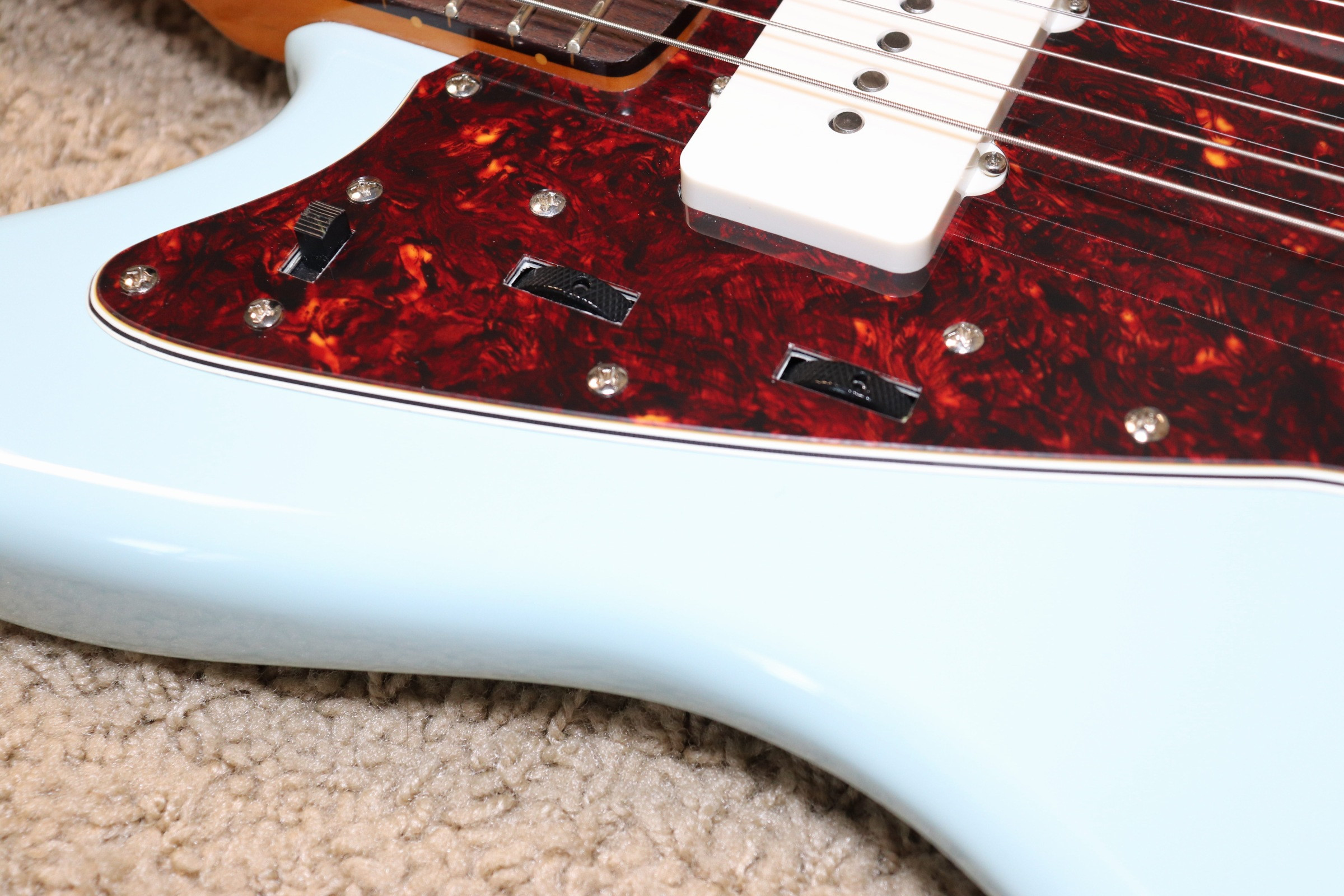 Close-up of Squier Classic Vibe Jazzmaster Headstock
Close-up of Squier Classic Vibe Jazzmaster Headstock
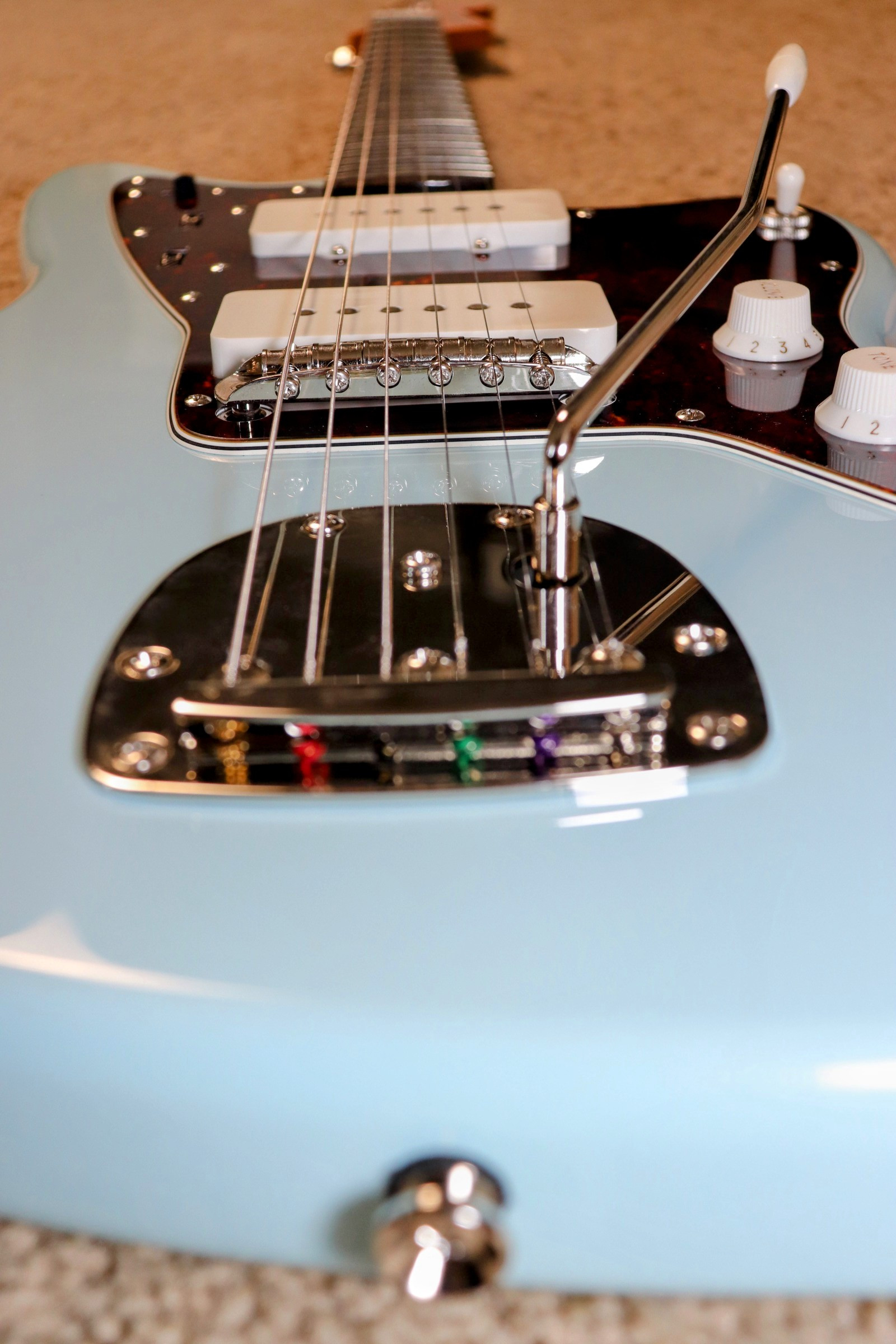 Squier Classic Vibe Jazzmaster Body Detail
Squier Classic Vibe Jazzmaster Body Detail
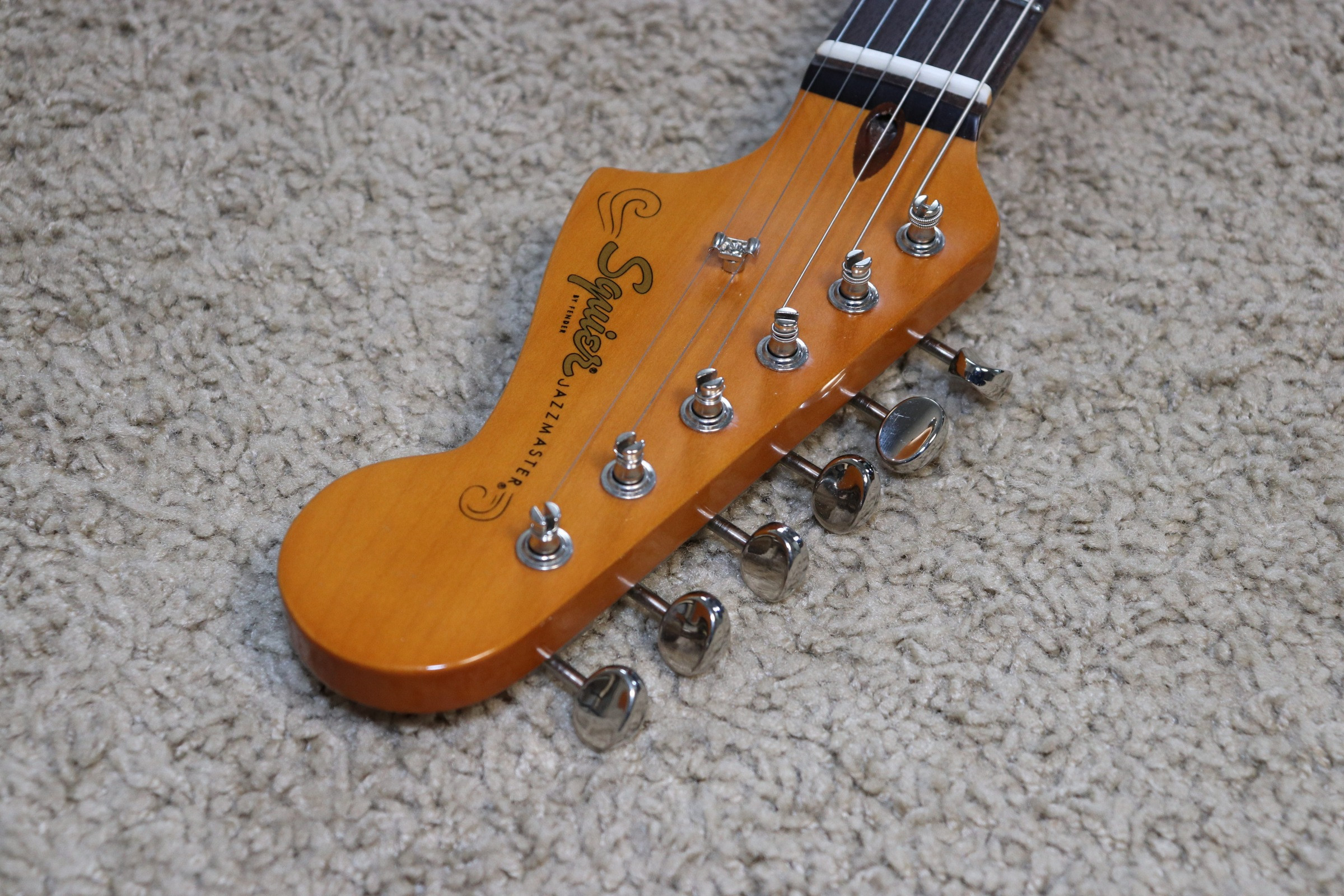 Squier Classic Vibe Jazzmaster Fretboard Inlay
Squier Classic Vibe Jazzmaster Fretboard Inlay
 Classic Vibe Jazzmaster pickups & body photo
Classic Vibe Jazzmaster pickups & body photo
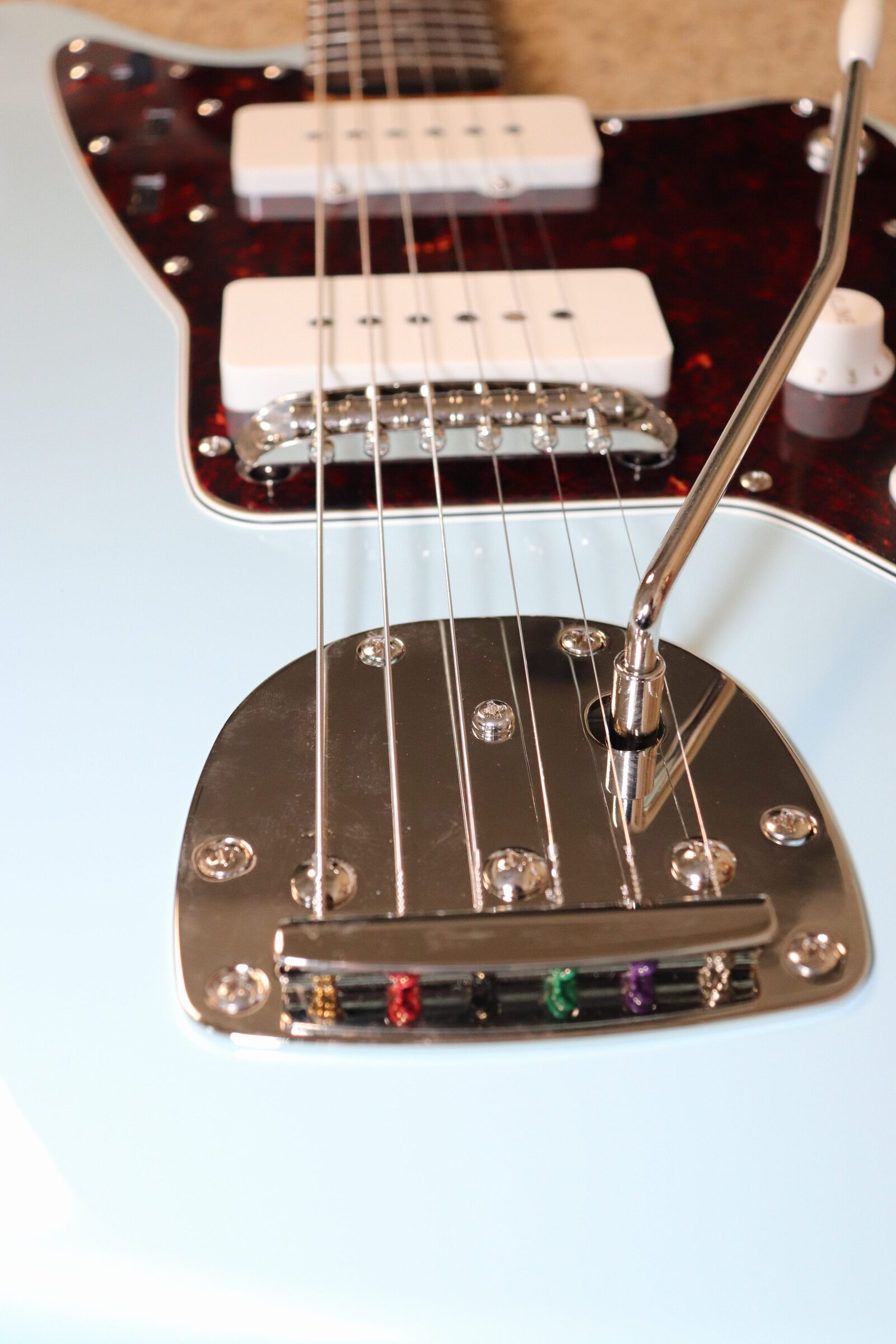 Squier Classic Vibe Jazzmaster Body Angle
Squier Classic Vibe Jazzmaster Body Angle
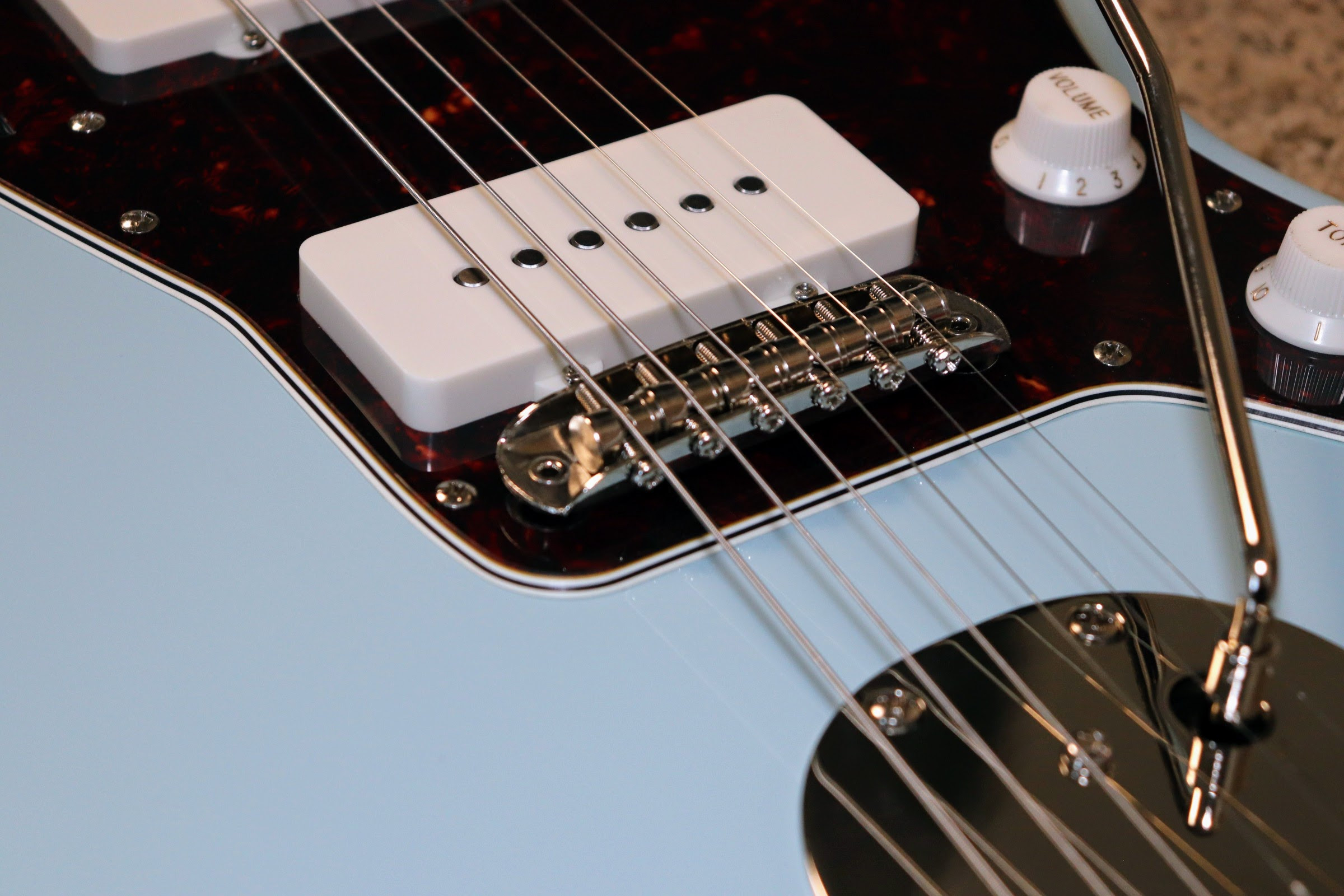 Squier Classic Vibe Jazzmaster Full Body Shot
Squier Classic Vibe Jazzmaster Full Body Shot
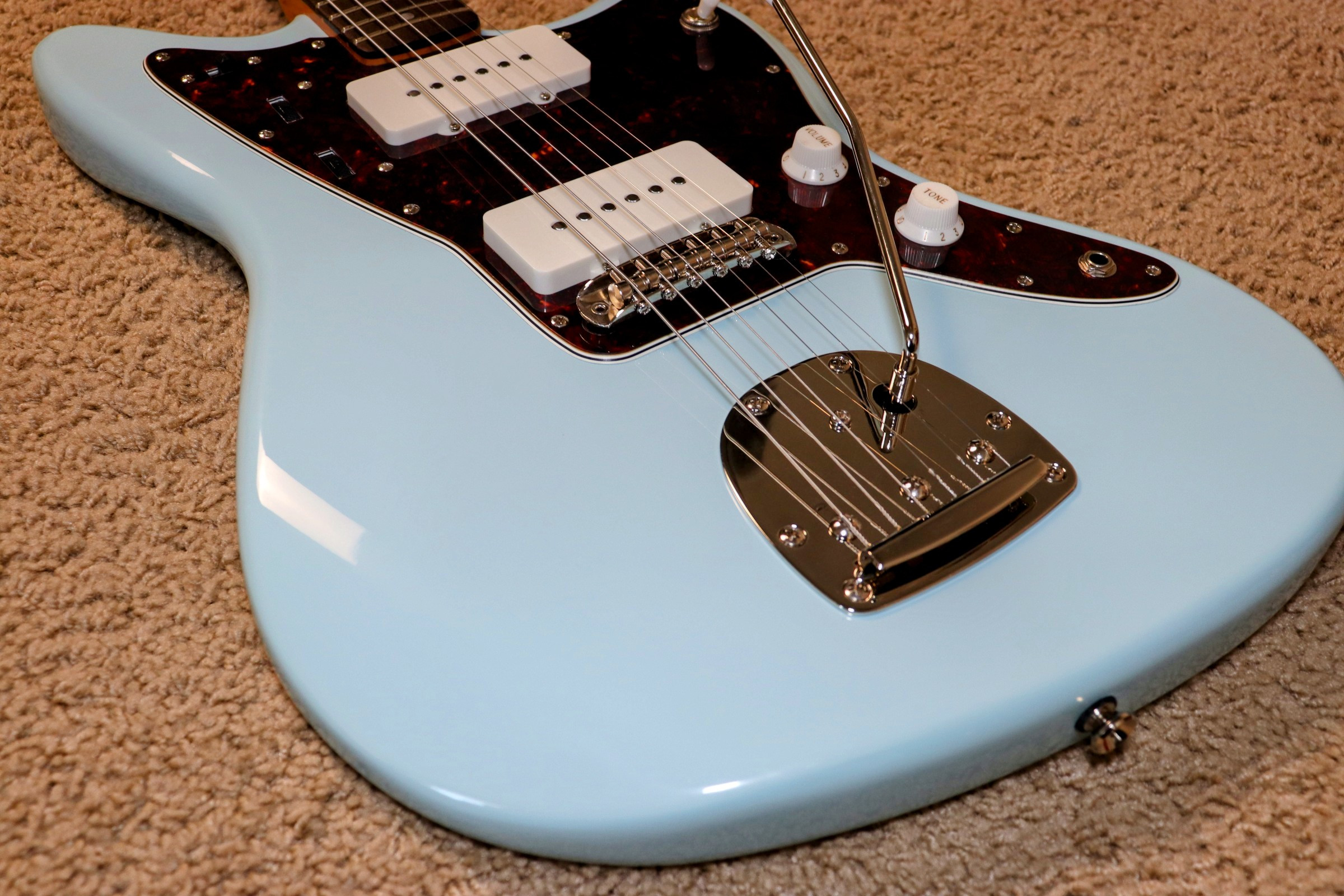 Squier Classic Vibe Jazzmaster Controls
Squier Classic Vibe Jazzmaster Controls
Final Verdict: Is the Squier Classic Vibe ’60s Jazzmaster a Worthy Jazz Master Guitar?
Do you gravitate towards offset guitars? Are you drawn to the sounds of shoegaze, indie, or alternative music? Do you appreciate a bit of character (and maybe some noise) in your driven tones? And are you seeking a jazz master guitar without the hefty price tag of a Fender? If so, the Squier Classic Vibe 60s Jazzmaster is a compelling option. It captures the essence and appeal of its Fender counterpart, delivering the distinctive jazz master guitar experience at a fraction of the cost.
Ultimately, if you’re considering a Jazzmaster, particularly a Squier, the Classic Vibe 60s edition is a strong contender that I believe you’ll be very pleased with. Finding one for under $400 is an exceptional deal, but even at full price, it represents excellent value for a quality jazz master guitar.
While my out-of-box experience had its drawbacks, the overall quality and playability of this guitar are undeniable. Even with the initial setup required, I give the Squier Classic Vibe 60s Jazzmaster high marks as an accessible and authentic jazz master guitar.
Final Rating: 7.6/10 (potentially higher with improved out-of-box condition).
Do you own a CV Jazzmaster? Share your thoughts and experiences in the comments below!
